Tomatoes are a favorite garden vegetable to grow, but they tend to be highly susceptible to diseases and pests. When it comes to your tender, young tomato plants, it’s a bug’s life! There is a variety of creepy-critters that will infest your tomatoes or eat the plants right to the ground!
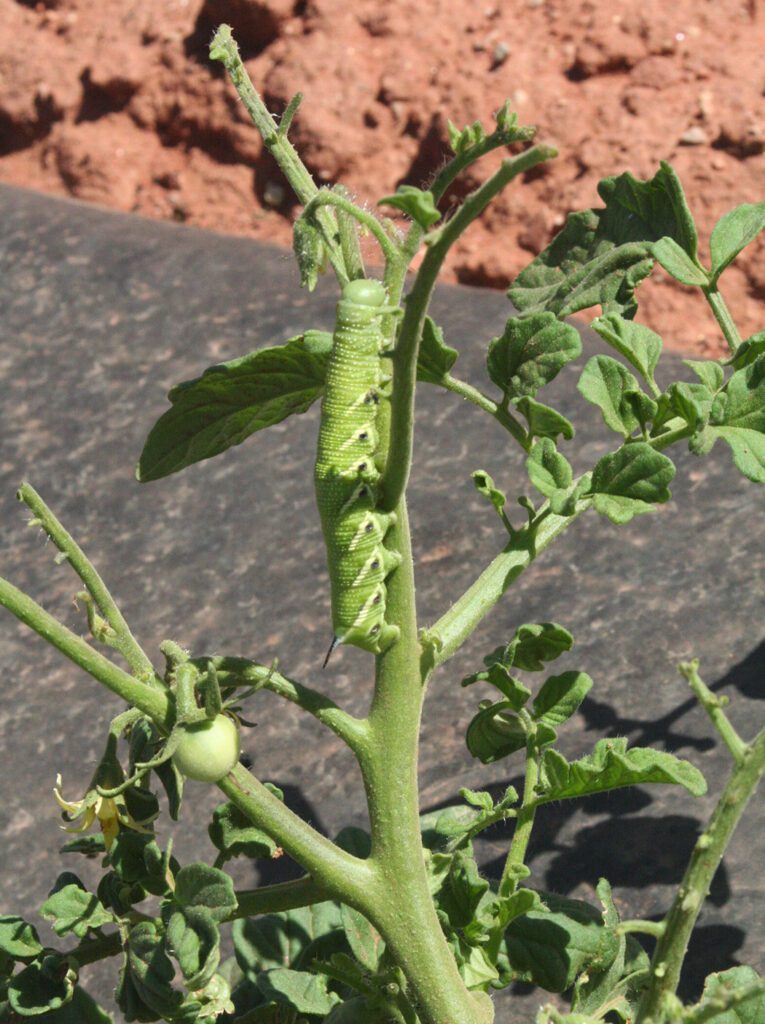
Photo: University of Utah Extension
It can be very frustrating. But hold on… don’t grab that insecticide spray just yet. Far too often, we gardeners reach for the insecticide at the first sighting of an insect on our plant without really knowing what’s going on or who the “enemy” really is.
That “bug” on your plant may actually be a beneficial insect who is happily munching away at those tiny aphids that you can barely see.
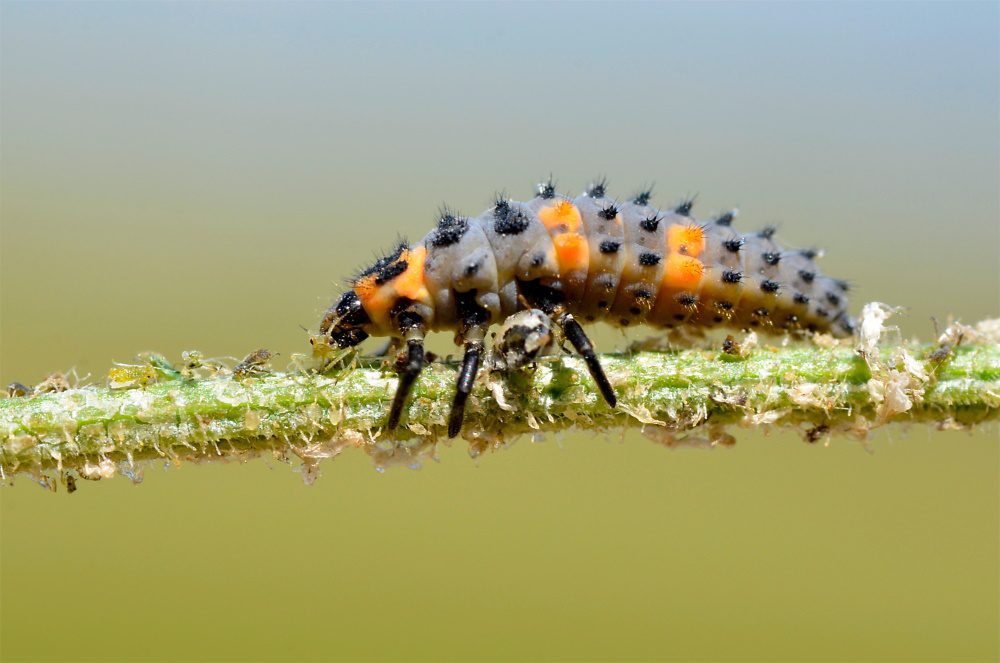
I’m not an advocate of using insecticides and I try to avoid them as much as possible. I prefer to give the beneficial insects a chance to do their work. For me, it’s worth having a few plants with holes in the leaves, then to indiscriminately spay a non-selective insecticide and kill off everything – including those beneficial insects.
It’s critical to find out what the insect is first, and then if it turns out to be one that is causing major damage, decide what you can live with and how you will deal with it. If you’re not sure what the insect is, take a photo or capture the critter and reach out to your local County Extension or Master Gardeners office for help.
While using chemicals is an “easy” solution to remove insect pests, it’s not the only one for pest control. Other types of control are biological, which would be allowing the beneficial insects do their work; or physical methods of control, such as hand-picking insects off plants, or using a barrier like a floating row cover or netting to keep pests out.
Once you determine who the adversary is, you can explore ways to reduce its damage – and it doesn’t always require an insecticide.
Below are a few of the most common insect pests of tomatoes and a few non-chemical ways to prevent or reduce their impact.
The Flea Beetle
Flea beetles are very small black or bronze leaf jumping beetles. They are about the size of a large pinhead – around 1/8 of an inch long. Their size makes them hard to see and as their name implies, like a flea, they will jump away. But their damage is very noticeable by the little holes they eat in the plant leaves.
Adult flea beetles become active in early spring and are most damaging to younger tomato plants (as well as seedlings of eggplant, pepper, spinach, and radishes).
Females lay single or clusters of eggs in small holes, in roots, soil, or leaves of many vegetables. Tiny white larvae hatch from eggs and feed on the roots of the newly planted seedlings. There are usually one to two generations per year.
If you’ve had issues with these pests in the past, a floating row cover – a physical form of control – can hold them off early in the season. Another option is to plant a sacrificial row of radishes next to your tomatoes. Flea beetles would much rather munch on radish leaves than tomato leaves – so give them what they really want! There is some good news, generally mature plants can withstand the damage caused by flea beetles.
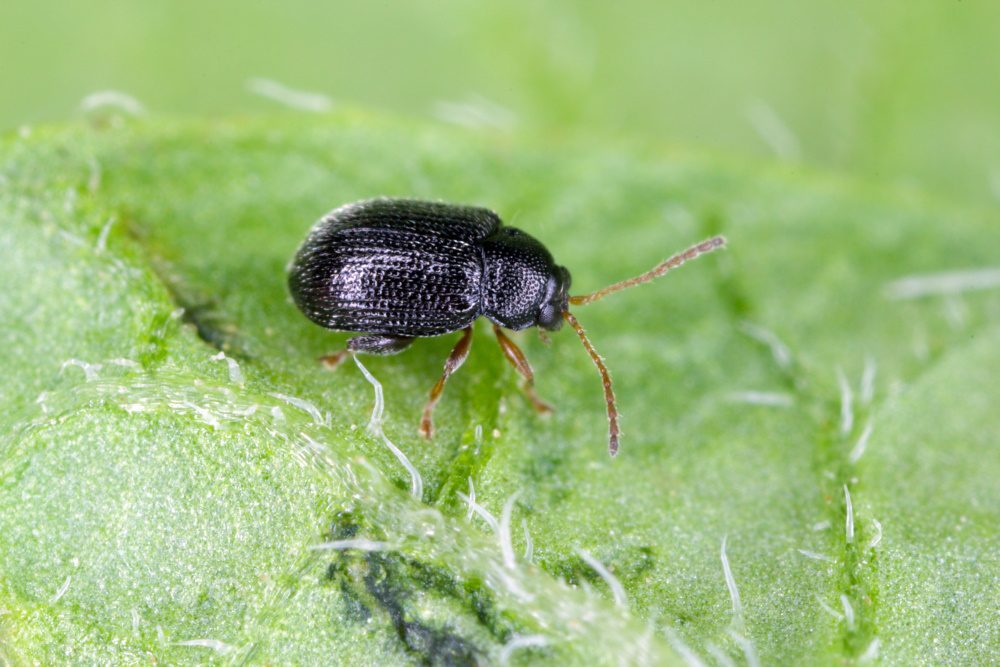


The Stink Bug
There are several kinds of stink bugs that feed on tomatoes and they may be brown or green, depending on where you live. Adult stink bugs have a distinct shield-shaped body and are about about ¾ of an inch long. And, they really do give off an unpleasant odor when threatened.
Stink bugs can also be a serious pest on tomatoes. With a sucking mouthpiece, the insect’s feeding habit destroys plant leaves and scars fruit. An enzyme in the probing mouthpiece turns the pierced area of the tomato into a liquid and the insect drinks it the juice. This results in a dark pinprick mark and a discolored area (often white, yellowish, or light green) on the fruit where fluid was removed.
Pesticides tend to be ineffective against stink bugs, but they can be trapped using a pheromone bait. In addition, eggs and adults can be handpicked from the plant and destroyed.
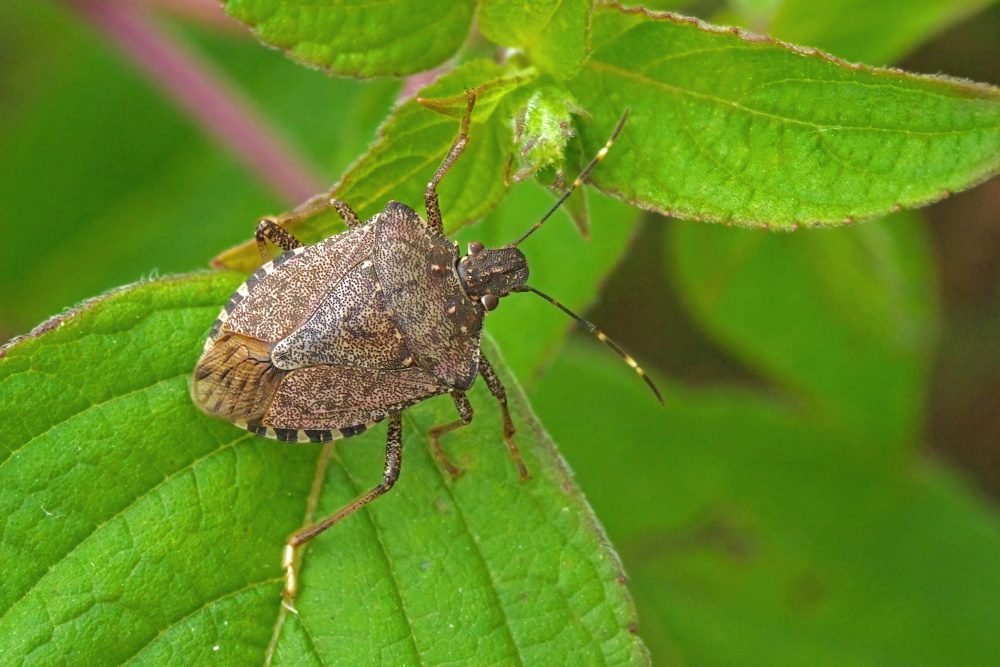
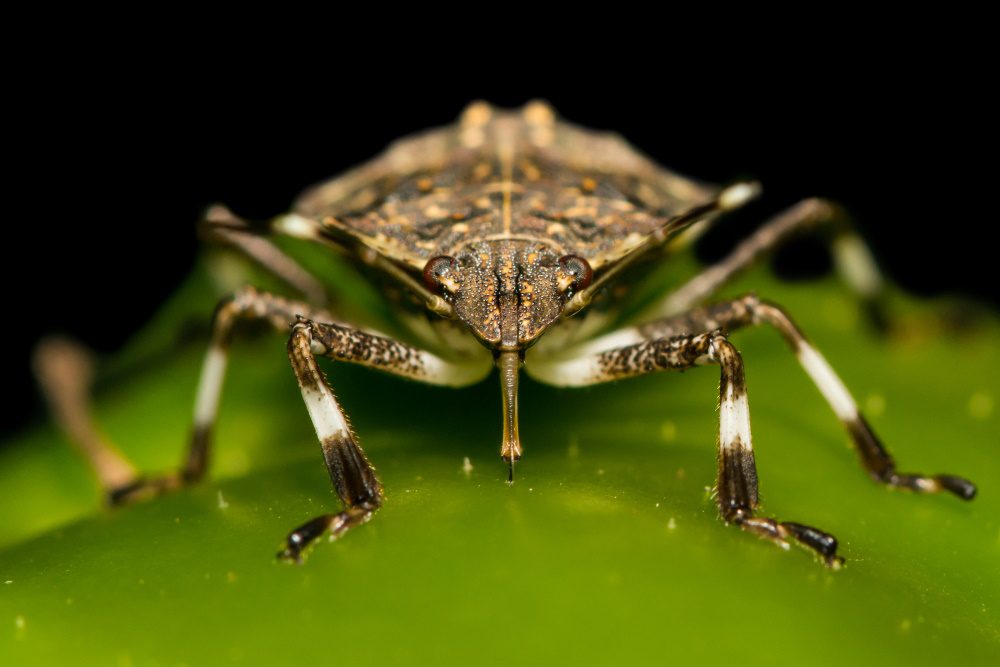

The Cutworm
Cutworms, also known as the tomato worm, can take down a young tomato plant in no time – eating it down to the soil line. They can also do considerable damage to tomato fruit — especially any fruit that is touching the ground.
The two most common cutworms are the black and the variegated. The black cutworm larvae are gray to brownish black in color and the variegated are tan and black in a mottled pattern. Both grow to about an inch or two before pupating.
The sneaky little buggers are active at night, and will hide in the soil or in debris during the day. Handpicking the worms is effective, but it needs to be done at night when they are active.
A better option is to make a paper collar to place around the base of the plant. The collar can be made with thin cardboard – like that of a cereal box.
Predatory beneficial insects, like lacewings and parasitoid wasps can also help control cutworms. Another option is to apply diatomaceous earth – known as DE around the base of the plant.
This natural product contains the fossilized remains of single-celled aquatic microorganisms call diatoms. It’s basically ancient phytoplankton. These microscopic diatoms cut into the tender body of the worm and kill it.

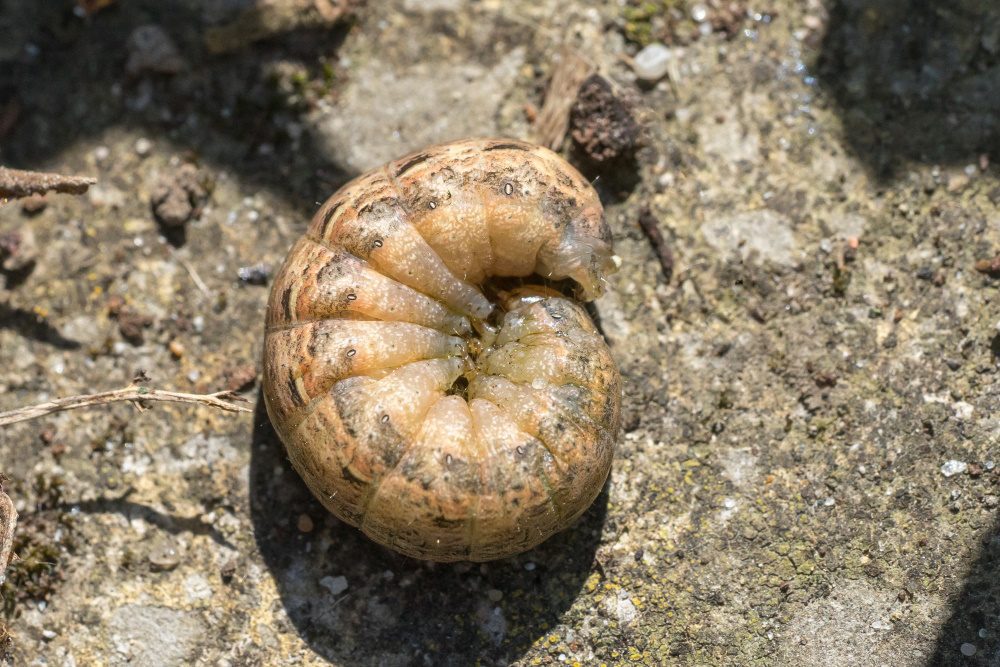
The Hornworm
The hornworm is a nasty devil easily identified by the two “horns” sticking out off of his rear end. They are the caterpillar larvae of hawkmoths and can grow up to 4 inches long.
There are two types: the tomato hornworm and the tobacco hornworm. Tomato hornworms have white stripes with green margins and tobacco hornworms feature white stripes with black margins.
They will munch away at tomato leaves and stems, starting at the top of the plant and doing considerable damage in a short time. And they leave behind distinctive barrel-shaped droppings beneath plants – another tell-tale sign of infestation.
Because of their size, hornworms are easily handpicked off plants, but their green color makes them vert difficult to see. Searching for them at night with a UV flashlight is said to work wonders.
If you come across a hornworm with white cocoons sticking out of its body – leave it be. This devil has fallen prey to the Cotesia wasp, a parasitoid wasp that lays its eggs in the body of the caterpillar.
Like the 70s movie Alien, the wasp eggs were laid inside the hornworm. As the larvae grow, cocoons become visible on the outside of the body. Death will soon follow for the hornworm, but allow the wasps to proliferate to continue to control worm populations. Don’t you just love the work of beneficial insects? Even if it’s right out of Hollywood!
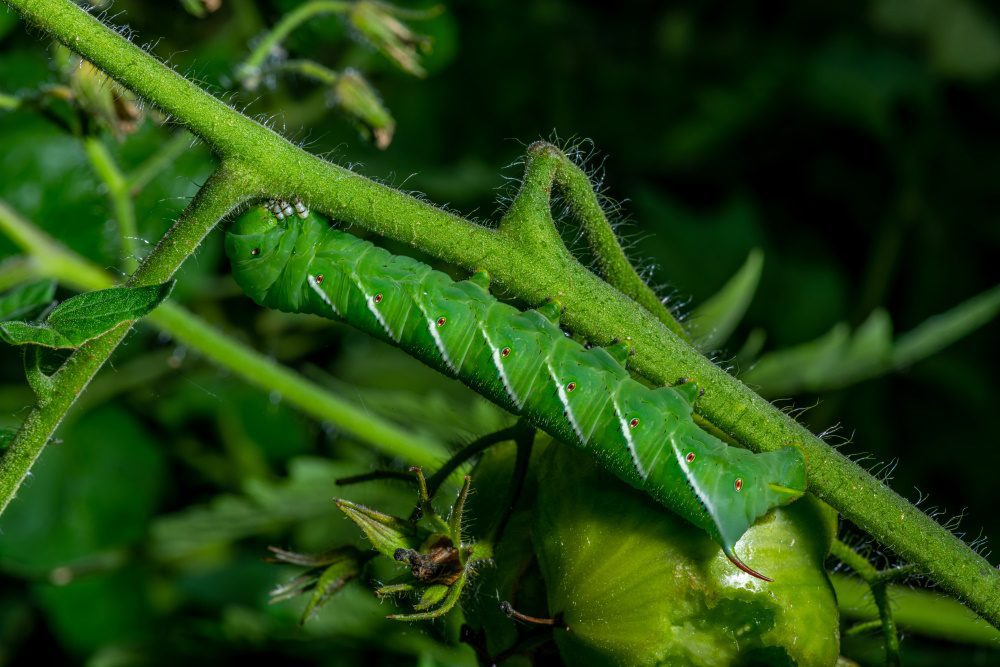
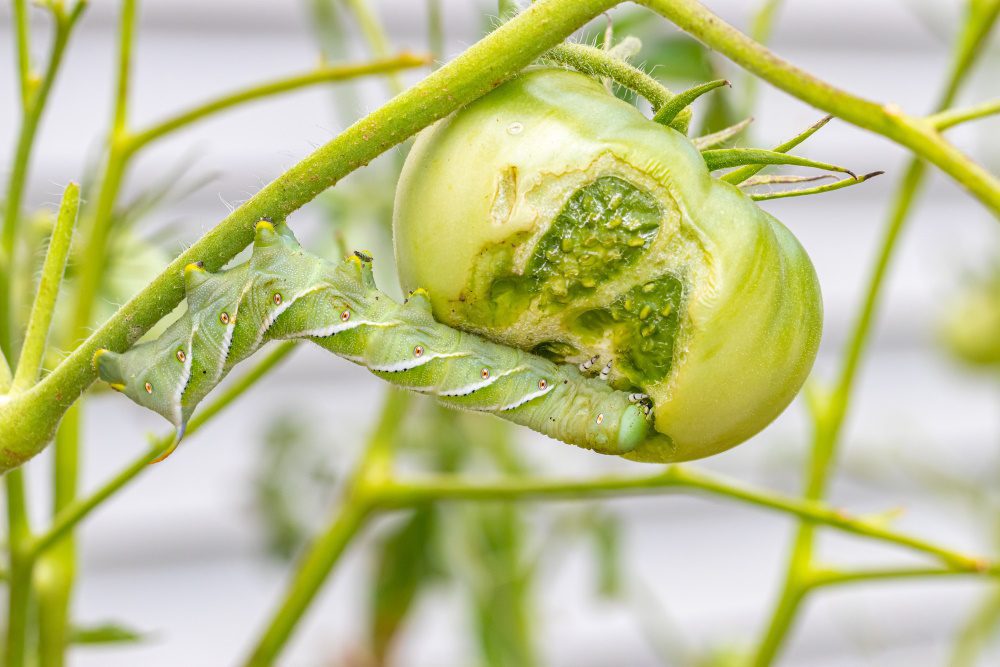

These are just a few of the most common insect pests of tomatoes. Remember, before reaching for the insecticide, learn what pest you are seeing; determine if it’s a beneficial insect; and investigate other control methods beyond chemicals.
Seeing disease in your tomatoes? Check out this post on common tomato diseases and prevention.


[…] Seeing insects infestations on your tomatoes? Check out this post on identifying insects on tomatoes. […]